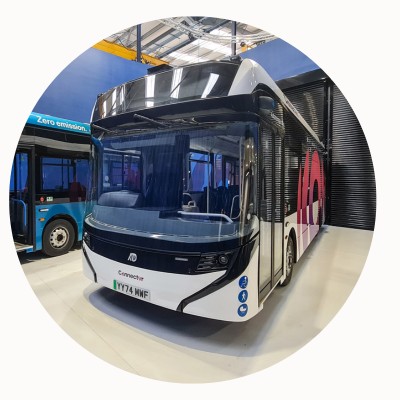Going the extra mile: Making public transit safer through tech
February 13, 2025 | By Joshua Farrington
|
about In Tech In Tech is our regular feature highlighting what people are talking about in the world of technology — everything from crypto and NFTs to smart cities and cybersecurity. |
The concept of driverless cars has intrigued people almost since cars have existed — radio-operated “phantom autos” drew huge crowds in American cities in the 1920s — but it’s only in recent years that experiments with autonomous vehicles have really started to take off. Despite reservations about the safety of self-driving vehicles, many remain committed to the idea, with Waymo robotaxis already ubiquitous in San Francisco and Tesla’s Cybercabs set to descend upon Austin, Texas this summer.
But for urban mobility enthusiasts, there’s an issue with driverless cars that goes beyond safety. When cities are clogged with motor traffic, moving people from one car to another, regardless of whether a human or a robot is doing the steering, does little to reduce the number of vehicles on the road and the levels of congestion. To tackle that issue means moving people from private vehicles into public transport — buses, trains, trams and other ways to ride. Innovation is changing how public transport operates as well, and it’s not just cars ditching their drivers.
While some urban rail transit systems have been automated for decades (London’s Docklands Light Railway opened in 1987 without drivers — giving great views of Canary Wharf for passengers who manage to get the seat at the very front), buses with a self-driving support system will soon be taking to the streets of Västerås in Sweden as part of a pilot.
Developed by Volvo Buses in collaboration with Swedish public transport companies VL and Svealandstrafiken, the scheme will see the technology “autonomously navigate buses into and out of bus stops, aiming to alleviate driver stress, enhance passenger safety and comfort, and reduce environmental impact,” according to a report in Just Auto.

Fully self-driving buses in public transport systems are “a thing of the far distant future,” Volvo Buses lead project manager Joakim Jonsson told the site, but self-driving support systems will help automate the process of entering and existing bus stops through standardized stopping positions and distances from the sidewalk or bus platform — giving drivers the ability to focus more on surrounding traffic.
And in the U.K., there are attempts to bring that far distant future a little closer. Scottish bus manufacturer Alexander Dennis revealed in January a new electric automated bus with plans for it to start carrying passengers around Cambridge’s biomedical campus this year following track-based testing.
While buses are going driverless, trains are also using technology to stay on track — literally. Network Rail, the operator of the U.K.’s rail infrastructure, has shared some of the ways it’s using advanced methods to stay on top of safety issues, including landslips and damage to railway bridges caused by traffic accidents.
In 2022, it began using inclinometers as part of a trial, with the wireless sensors being set up along a length of track to detect rock and soil movement and send an alert when it registers a five-degree tilt. The solar-powered sensors are paired with CCTV and advanced weather forecasting to spot areas at risk of landslips and let engineers take action before it impacts services.
Similarly, Network Rail is now using remote sensors to monitor vehicles hitting railway bridges — one of the most common causes of rail delays. The Harlaxton Bridge in Grantham, Lincolnshire, is covered in warning signs, yet the curved foundation was hit by trucks 14 times between 2023 and 2024, including three incidents in the space of a week, leading to more than $600,000 of damage and 60 hours of delays. A new trial of sensors will alert engineers to bridge strikes in real time to speed up response times and damage assessments.
“While we know we cannot prevent all future incidents, this technology will cut the inspection time after a bridge strike from hours to seconds in many cases,” Michael Clegg, a route engineer at Network Rail, said. “This means we can have trains running again much sooner after a bridge strike, providing a boost to the reliability of the railway and saving potentially hundreds of thousands of pounds.”
With Chinese rail manufacturer CRRC recently unveiling a train capable of travelling at speeds of 280 miles per hour — making it the fastest conventional passenger train in the world — rail safety is paramount. However they’re traveling, and whomever is doing the driving, passengers want to know they’ll make it to their destination safely.
Photo credits: Middle photo, Alexander Dennis; bottom photo, Network Rail.